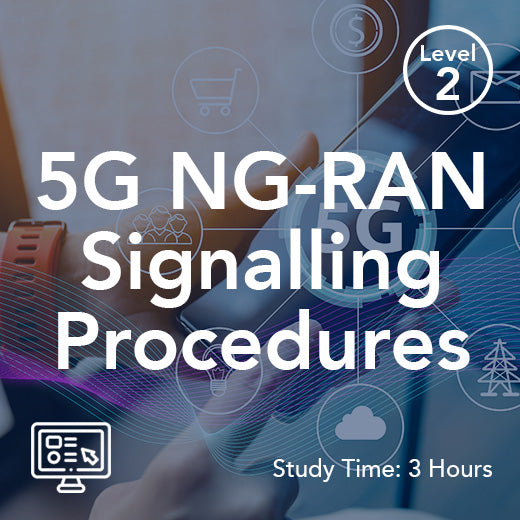What Is Real-Time Network Optimization In Telecom?
- , by Stephanie Burrell
- 5 min reading time
Real-time network optimization in telecom refers to the process of continuously monitoring and adjusting network performance to ensure optimal efficiency and quality of service for users. With the increasing demand for high-speed data transmission and reliable connectivity, telecom companies are under pressure to deliver seamless communication services to their customers. Real-time network optimization plays a crucial role in facilitating efficient communication and operational processes within business operations by identifying and resolving network issues as they occur, rather than waiting for problems to escalate and impact user experience.
One of the key challenges faced by telecom operators is the dynamic nature of network traffic. With the proliferation of smartphones, IoT devices, and streaming services, network usage patterns can vary significantly throughout the day. Real-time network optimization allows operators to adapt to these fluctuations by dynamically allocating resources, adjusting routing paths, and prioritizing traffic based on user demand. By continuously monitoring network performance metrics such as latency, packet loss, and throughput, operators can identify bottlenecks and congestion points in the network and take proactive measures to alleviate them.
Another important aspect of real-time network optimization is the ability to predict and prevent network failures before they occur. By leveraging predictive analytics and machine learning algorithms, operators can analyze historical data and trends to anticipate potential issues and take preemptive actions to mitigate them. This proactive approach not only helps to improve network reliability and availability but also enhances the overall user experience by reducing downtime and service disruptions.
Furthermore, real-time network optimization enables operators to optimize resource utilization and reduce operational costs. By dynamically adjusting network configurations and traffic routing, operators can maximize the efficiency of their infrastructure and minimize unnecessary resource consumption. This not only improves the overall performance of the network but also helps to lower operational expenses and increase cost efficiency, leading to significant savings and increased profitability.
In conclusion, real-time network optimization is a critical component of modern telecom operations, enabling operators to deliver high-quality communication services to their customers while maximizing network efficiency and reliability. By continuously monitoring and adjusting network performance in real-time, operators can proactively address issues, optimize resource utilization, and enhance the overall user experience. As the demand for faster and more reliable connectivity continues to grow, real-time network optimization will play an increasingly important role in shaping the future of telecom services.
Introduction to Network Optimization
Network optimization is the process of enhancing the performance, efficiency, and reliability of telecommunications networks. This involves a thorough analysis of network data to identify areas that require improvement and implementing optimal solutions to boost overall network performance. For telecom companies, effective network optimization is crucial to provide seamless connectivity, reduce energy consumption, and minimize operational costs. By leveraging advanced technologies such as machine learning and predictive analytics, network operators can fine-tune network resources, elevate service quality, and ensure a reliable service for their customers. In a rapidly evolving telecommunications landscape, staying ahead with optimized networks is essential for maintaining competitive advantage and delivering high-quality user experiences.
Understanding Telecom Networks
Telecom networks are intricate systems that demand meticulous planning, design, and management to achieve optimal performance. Understanding these networks involves a deep dive into network architecture, network devices, and network settings to pinpoint areas for enhancement. Telecom providers must consider various factors such as network traffic, bandwidth usage, and network security to ensure a consistent service and prevent network congestion. By optimizing network infrastructure and employing effective network management strategies, telecom operators can significantly improve network reliability, reduce downtime, and enhance the overall customer experience. This comprehensive approach to network management is vital for maintaining the robustness and efficiency of telecom networks in an increasingly connected world.
Real-Time Network Optimization
Real-time network optimization is the practice of analyzing network data as it is generated to identify areas for improvement and implement optimal solutions immediately. This proactive approach allows telecom providers to swiftly respond to fluctuations in network traffic, bandwidth usage, and emerging network security threats. By utilizing AI-driven tools and real-time data, network operators can enhance network performance, improve service quality, and ensure seamless connectivity. In the competitive telecommunications industry, real-time network optimization is indispensable for telecom companies aiming to deliver high-quality services and maintain customer satisfaction. This dynamic method ensures that networks are always operating at their best, ready to meet the demands of modern digital communication.
Predictive Analytics in Optimization
Predictive analytics is a powerful tool in network optimization, enabling telecom providers to forecast network demands, identify potential bottlenecks, and implement optimal solutions. By analyzing historical network data and traffic patterns, network operators can anticipate future network usage and optimize resource allocation to ensure reliable service. Predictive analytics also aids in pinpointing areas for improvement, refining network architecture, and deploying cost-efficient solutions. By leveraging predictive analytics, telecom companies can enhance network performance, reduce operational costs, and improve the customer experience. This forward-looking approach allows for effective network planning and ensures that networks are prepared to handle future growth and evolving user demands.
The Importance of Network Architecture
Network architecture is a cornerstone of network optimization, as it dictates the overall performance and efficiency of the network. A well-designed network architecture allows telecom providers to optimize network resources, improve service quality, and ensure seamless connectivity. This involves the strategic design and configuration of network devices, settings, and infrastructure to meet the dynamic needs of telecom companies. By focusing on optimizing network architecture, telecom operators can enhance network reliability, minimize downtime, and elevate the customer experience. Effective network architecture is essential for telecom providers to remain competitive in the telecommunications industry and deliver high-quality services that meet the ever-growing demands of their customers.


































